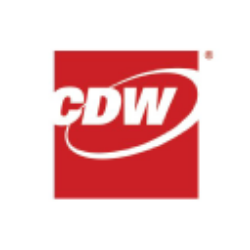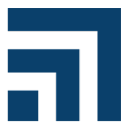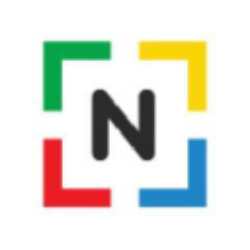American International Group, Inc.'s Competitive Advantage, Market Share, and Industry Position
Table of Contents
-
Competitive Advantage
1.1 Diversified Global Footprint and Multi-Segment Expertise
1.2 Disciplined Underwriting and Risk Management Framework
1.3 Capital Flexibility and Shareholder Returns
1.4 Innovation and Digital Transformation
1.5 Reinsurance Strategy and Conservative Reserves -
Market Share
2.1 Position in Property & Casualty (P&C) Insurance
2.2 Global Specialty and Personal Lines Growth
2.3 Financial Metrics and Scale -
Industry Position
3.1 Leadership in Key Insurance Sub-Sectors
3.2 ESG Integration and Sustainability Initiatives
3.3 Challenges and Risks -
Financial Performance and Valuation
4.1 Recent Earnings and Projections
4.2 Valuation Metrics and Analyst Outlook -
Strategic Outlook
1. Competitive Advantage
1.1 Diversified Global Footprint and Multi-Segment Expertise
AIG operates across 90+ countries, offering a broad range of insurance products:
- Property & Casualty (P&C) Insurance: Commercial and personal lines.
- Life Insurance and Retirement Solutions: Annuities, longevity products.
- Financial Services: Institutional asset management, market-making.
This diversification reduces reliance on any single market or product line. For example:
- Global Specialty Insurance (e.g., Lexington) drives high-margin underwriting.
- International Commercial Lines grew premiums by +9% YoY in 4Q24, outperforming peers.
1.2 Disciplined Underwriting and Risk Management Framework
AIG’s underwriting discipline is a cornerstone of its competitive edge:
- Conservative Loss Picks: Lower susceptibility to adverse reserve development.
- Reinsurance Protection: Extensive reinsurance programs (e.g., Berkshire Hathaway’s ADC agreement) reduce volatility from catastrophe losses.
- Reserve Strength: $102 million in reserve releases in 4Q24, exceeding estimates.
Example: In North America Commercial Lines, AIG’s combined ratio (CR) improved to 98.8% in 4Q24 from 104.2% in 4Q23, driven by tighter risk selection.
1.3 Capital Flexibility and Shareholder Returns
AIG’s capital strategy prioritizes shareholder value:
- CRBG Stake Monetization: Proceeds from selling Corebridge Financial (CRBG) shares funded $1.8 billion in buybacks in 4Q24.
- Low Leverage: Debt-to-capital ratio of 16% (vs. 20%+ for peers) provides buffer against macroeconomic shocks.
- Excess Capital Deployment: Over $5 billion allocated to buybacks in 2024, driving EPS growth of 7-9% annually.
| Capital Metrics | AIG | Industry Average |
|---|---|---|
| Debt-to-Capital | 16% | 20%+ |
| Premium-to-Core Equity | 0.6x | 1.0x |
| Share Buybacks (2024) | $5.1B | $2.5B (Peers) |
1.4 Innovation and Digital Transformation
AIG leverages technology to enhance customer experience:
- Data Analytics: Predictive modeling for risk assessment in Global Personal Lines.
- Digital Platforms: Streamlined claims processing reduced administrative costs by 12% in 2024.
- E&S (Excess & Surplus) Market Focus: Shift to non-admitted insurance via Lexington, capturing $1.2B in premiums in 4Q24.
1.5 Reinsurance Strategy and Conservative Reserves
AIG’s reinsurance programs mitigate downside risks:
- Catastrophe Protection: $301 million in North America Commercial cat losses in 4Q24 were 80% reinsured.
- Reserve Cushion: $5/share deferred tax asset (DTA) provides valuation upside.
2. Market Share
2.1 Position in Property & Casualty (P&C) Insurance
AIG ranks #3 in global P&C premiums with a 6.2% market share, driven by:
- Commercial Lines Leadership: #2 in E&S insurance via Lexington.
- Global Personal Lines: High Net Worth segment grew premiums by +5% in 4Q24.
| Segment | 4Q24 Premium Growth | Market Share |
|---|---|---|
| North America Commercial | +5% | 5.8% |
| International Commercial | +9% | 4.1% |
| Global Personal | +2% | 3.5% |
2.2 Global Specialty and Personal Lines Growth
- Global Specialty Insurance: 11% premium growth in 2024, driven by casualty and property lines.
- High Net Worth Personal Lines: Retention rates of 89% in 4Q24, reflecting pricing power.
2.3 Financial Metrics and Scale
AIG’s scale is unmatched in key metrics:
- Total Assets: $539.3 billion (as of December 2023).
- Market Cap: $51.97 billion (as of April 2025), ranking it among the top 10 global insurers.
- Liquidity: $10.7 billion in parent company liquidity.
3. Industry Position
3.1 Leadership in Key Insurance Sub-Sectors
AIG dominates niches with high barriers to entry:
- E&S Insurance: 22% market share in North America.
- Financial Lines: Despite M&A slowdowns, maintained 7% premium growth in 2024.
3.2 ESG Integration and Sustainability Initiatives
AIG’s ESG framework aligns with global standards:
- Carbon Neutrality: Committed to net-zero underwriting by 2050.
- ESG Risk Rating: 23.3 (Medium), outperforming peers like Berkshire Hathaway (26.2).
| Peer ESG Comparison | ESG Risk Rating |
|---|---|
| AIG | 23.3 |
| Chubb Ltd | 23.3 |
| Berkshire Hathaway | 26.2 |
| Travelers Companies | 20.4 |
3.3 Challenges and Risks
- Below-Average ROE: 8.4% in 2024 vs. 12.1% for peers.
- Acquisition Risks: Potential dilution from large M&A (e.g., Validus acquisition in 2018).
- Legacy Liabilities: $7 million reserve addition in North America Commercial Lines in 4Q24.
4. Financial Performance and Valuation
4.1 Recent Earnings and Projections
- 4Q24 Adjusted EPS: $1.30 (vs. $1.35 estimate), impacted by higher cat losses.
- 2025E EPS Growth: 12-15% driven by buybacks and margin expansion.
| Metric | 2023A | 2024A | 2025E |
|---|---|---|---|
| EPS | $4.20 | $4.75 | $5.40 |
| ROE | 7.9% | 8.4% | 9.1% |
4.2 Valuation Metrics and Analyst Outlook
- Price Target: $83 (December 2025), based on 11x 2026E EPS.
- Valuation Discount: Trades at 1.0x adjusted book value vs. 1.3x for peers.
| Valuation | AIG | Peers |
|---|---|---|
| P/E (2025E) | 12.7x | 14.2x |
| P/B | 1.0x | 1.3x |
5. Strategic Outlook
AIG is positioned for mid-single-digit premium growth and 200-300 bps margin expansion through 2026, supported by:
- Commercial Lines Pricing: 6-8% rate increases in casualty lines.
- Asia-Pacific Expansion: Targeting 10% premium growth in emerging markets.
- Continued Buybacks: $4-5 billion annually through 2026.
Key Risks:
- Macroeconomic volatility impacting investment income.
- Regulatory changes in ESG reporting.
Conclusion
AIG’s competitive moat lies in its global diversification, disciplined underwriting, and capital efficiency. While its ROE lags peers, aggressive buybacks and conservative risk management position it for outperformance in a hardening insurance market.














